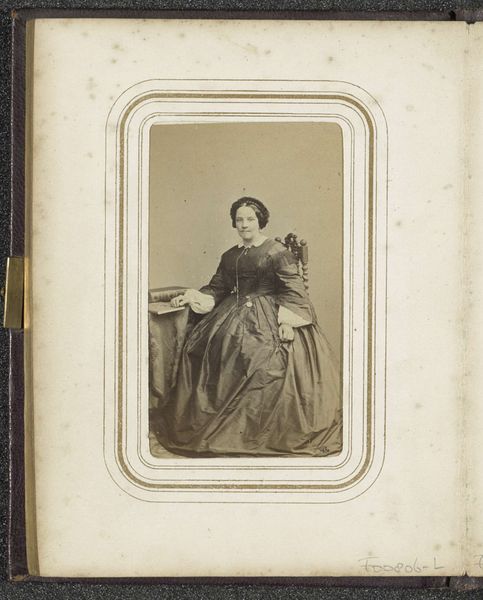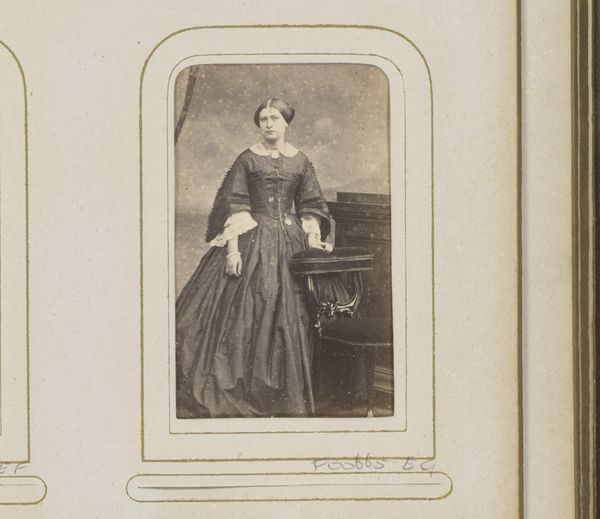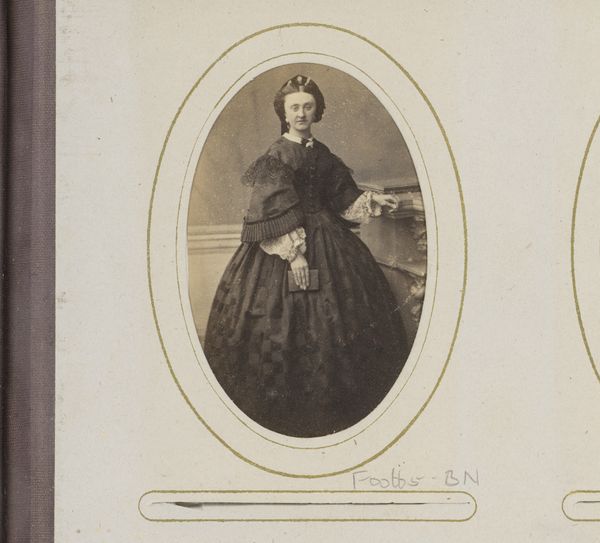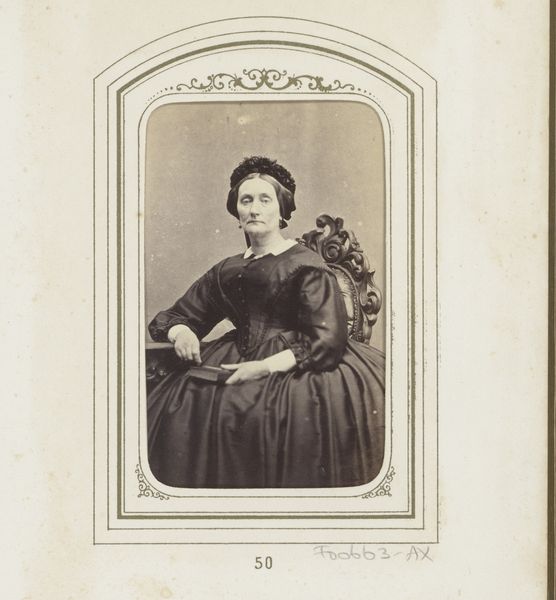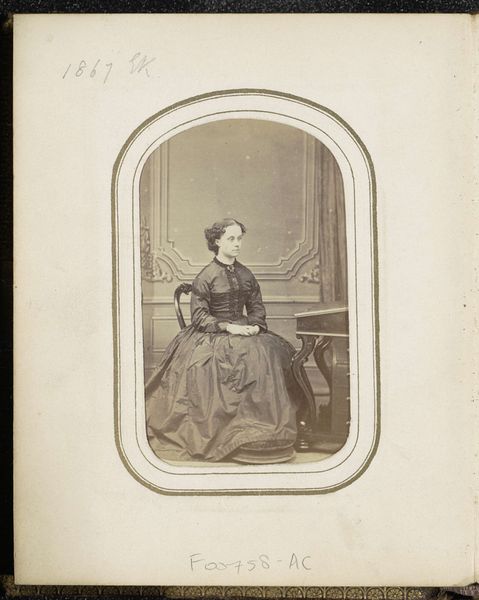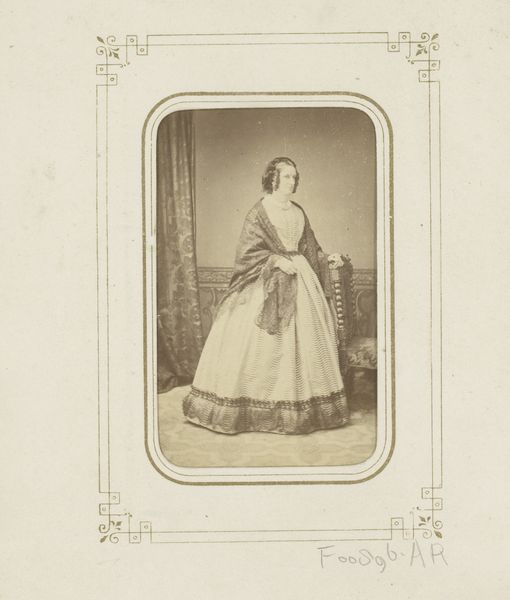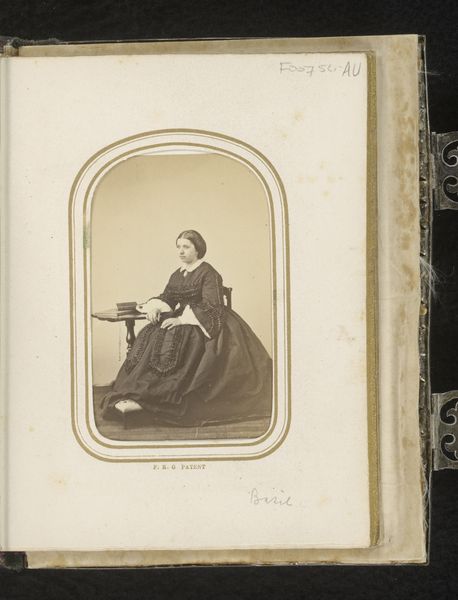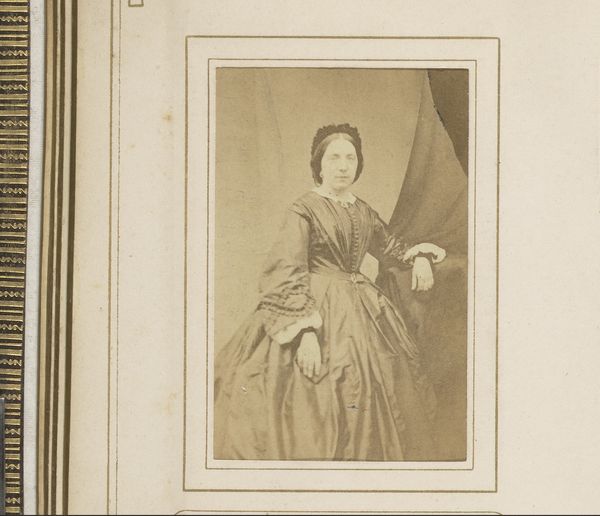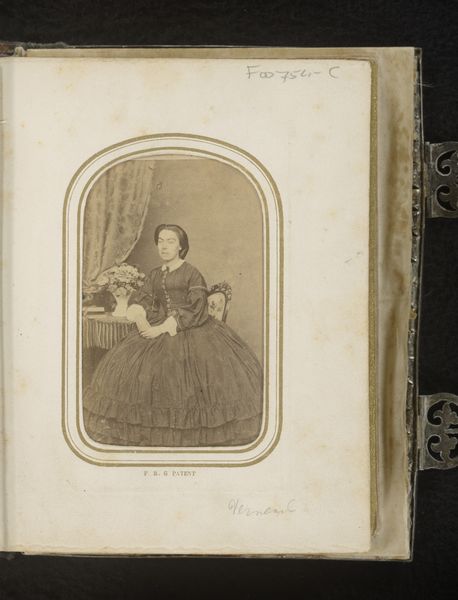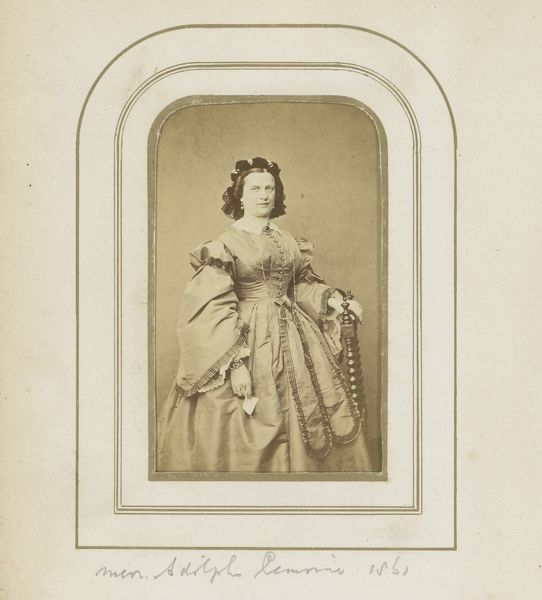
photography, gelatin-silver-print
#
portrait
#
photography
#
historical photography
#
gelatin-silver-print
#
19th century
#
realism
Dimensions: height 82 mm, width 50 mm
Copyright: Rijks Museum: Open Domain
Editor: This gelatin-silver print, "Portret van een vrouw zittend bij een tafel," is a portrait by Wilhelm Frederick Antonius Delboy, created sometime between 1860 and 1890. The formality of the subject’s pose and dress are striking. What aspects of its visual composition stand out to you? Curator: Immediately, the tension between the roundness of the sitter’s dress and the rectilinear geometry of the backing strikes the eye. Note the carefully managed tonal range, avoiding stark contrast for a softer overall effect. How does this subtle graduation shape your perception of the sitter's character? Editor: It feels like it softens her features. Her face, although somewhat stern, becomes approachable. Is the blurring also related to the material or the period the photograph was taken in? Curator: The gelatin-silver printing process, while relatively advanced for its time, was prone to certain imperfections. Also, consider the restricted depth of field. Notice how Delboy skillfully focuses our attention on the woman’s face and upper body. Where else do you see evidence of deliberate compositional choices? Editor: I guess the placement of her hands… one resting on her lap and the other on the table, breaking the flatness of the image. This is also one of the brightest parts of the photograph. Curator: Precisely. Her hand on the table draws a visual line across, and the details in the dress itself contribute complexity, providing further material interest against the relative simplicity of the background. These minute arrangements all contribute to the overall reading of the image. Editor: Thank you for that detailed perspective! It's interesting to consider the photographic processes of that time in combination with the artist's own compositional intent. Curator: Indeed, analyzing these visual elements in their totality reveals much about both the artistry and the technology of the era.
Comments
No comments
Be the first to comment and join the conversation on the ultimate creative platform.
